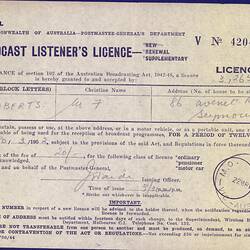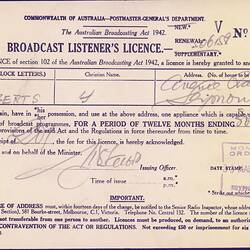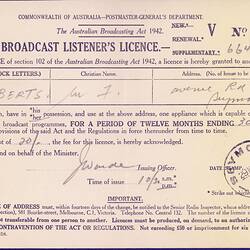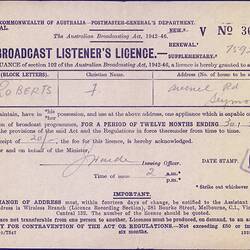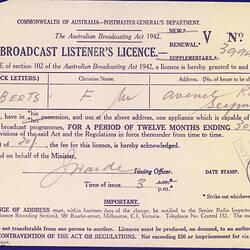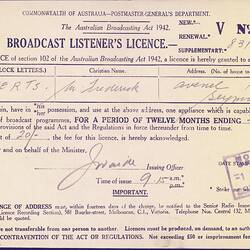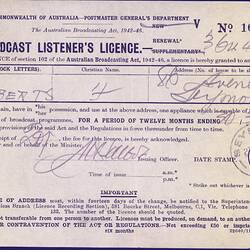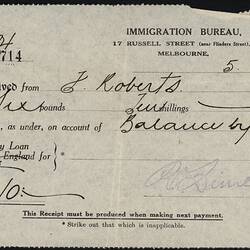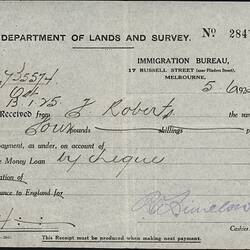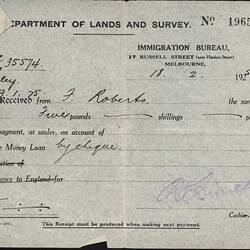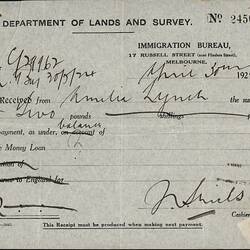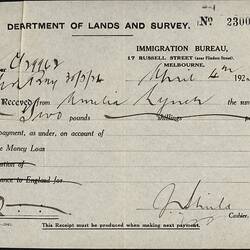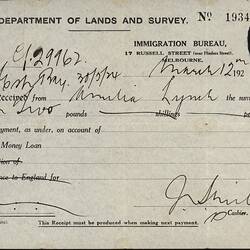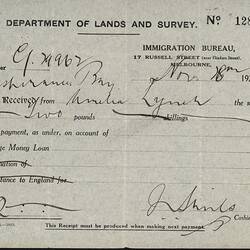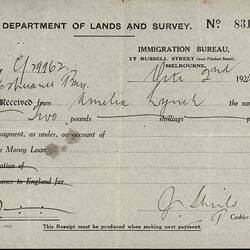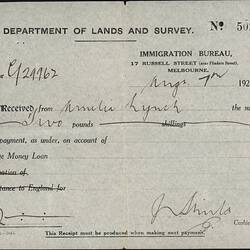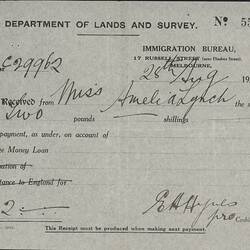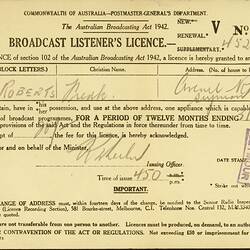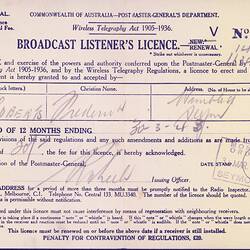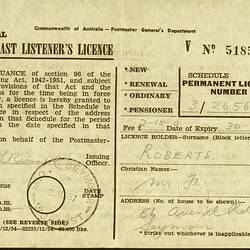Summary
Amelia (Lynch) and Frederick Roberts migrated separately from England in 1924 and 1925 and settled in Seymour, Victoria.
Piecing together the story of Frederick and Amelia (nee Lynch) Roberts has been based on a small collection of disparate documents dating from the inter-world war and post World War II years in Australia.
Amelia Lynch, born in the 1890s in London, grew up in the Parish of Saint Aldhelm. Little is known about her early years, the collection donor suggested she was raised in a home possibly for orphans. Working in an Ordnance Factory in the early 1920s she produced munitions for the British Army and lived in a boarding house for young women. The collection holds a Factory Ordinance Regulations from 1910 and . from this time.
Amelia booked a passage to Australia on the S.S. Esperance Bay, registered as a domestic servant. She docked in Fremantle in 1925 aged 29, before travelling onto Melbourne, Victoria to begin her new life. A sacraments card and the previously mentioned documents. are all that remain of the belongings Amelia brought with her.
Frederick Roberts's early life is equally as shadowy as his future wife's. Setting sail for Australia on December 1925, aged 24, he too was bound for Melbourne. Like Amelia, he paid for his fare by means of a loan from the Australian Immigration Bureau, which he paid back in instalments on his arrival to Australia.
The loan receipts suggest that not all forms of assistance for British migrants were free or subsidised passages; all these schemes were introduced by the Australian Government to entice young British single men and women and young families to migrate to Australia, to boost the population, land settlement and workers especially in domestic and agricultural roles.
Frederick and Amelia were married in 1926. The couple were settled in Seymour, Victoria by at least 1943, if not earlier, moving to an address on Avenel Road in this year. As shown on the 1955 electoral roll, Frederick classed himself as a labourer whilst Amelia's role was home duties.
Here, like many other Australians, they felt the effects of World War II during the 1940s. Even in Seymour, a small town in central Victoria, the impact trickled down into rural life. Rationing was introduced as the War progressed and moved dangerously close to Australian territory in the Pacific and South-East Asia. The purchase of clothing, meat and other essential goods was restricted by rationing coupons and identity cards were issued to citizens.
The couple also made full use of the introduction of the radio. From at least 1942 until 1958 Frederick took out a Broadcast Listener's Licence each year, in order to use a radio and many of these are represented in the collection. These licences, issued by the Postmaster General's Department, were designed to raise funds to pay for the production of radio programmes and maintaining public radio stations.
More Information
-
Keywords
Migration & Settlement, Assisted Immigration, Post War Migration
-
Authors
-
Article types

